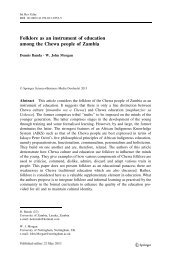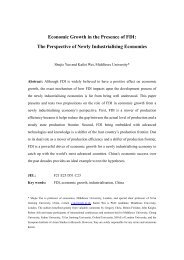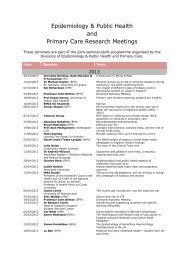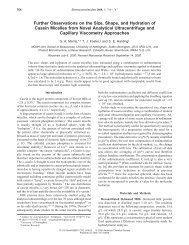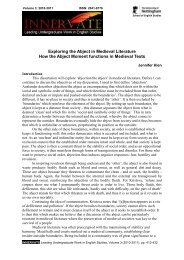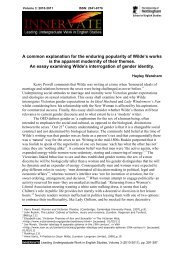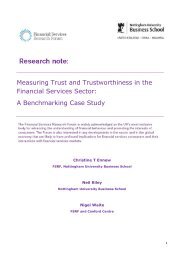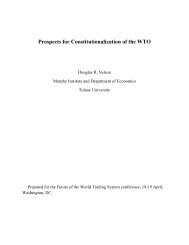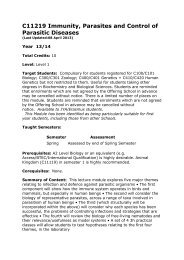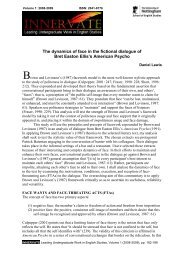Break date estimation for models with deterministic structural change
Break date estimation for models with deterministic structural change
Break date estimation for models with deterministic structural change
You also want an ePaper? Increase the reach of your titles
YUMPU automatically turns print PDFs into web optimized ePapers that Google loves.
the appropriate Pitman drifts <strong>for</strong> the asymptotic analysis of break <strong>date</strong> estimators in<br />
this case. The I(1) case <strong>for</strong> u t is represented by setting = 1 in (2). Here we assume<br />
1 = 1 and 2 = 2;T = 2 T 1=2 which are now the appropriate scalings. 1 For future<br />
brevity, the two cases are summarized as follows:<br />
Assumption I(0): jj < 1 <strong>with</strong> 1 = 1;T = 1 T 1=2 and 2 = 2;T = 2 T 3=2 .<br />
Assumption I(1): = 1 <strong>with</strong> 1 = 1 and 2 = 2;T = 2 T 1=2 .<br />
We consider estimating by minimizing the residual sum of squares from a quasidierenced<br />
version of (1), i.e.<br />
^ = arg min S(; )<br />
2<br />
where S(; ) denotes the residual sum of squares from an OLS regression of y on Z ;<br />
<strong>with</strong><br />
y = [y 1 ; y 2 y 1 ; :::; y T y T 1 ] 0 ;<br />
Z ; = [x 1 ; x 2 x 1 ; :::; x T x T 1 ] 0 <strong>with</strong> x t = [1; t; DU t () ; DT t ()] 0 :<br />
If were known, standard GLS-based eciency considerations would lead us to set<br />
= . For example, if = 0, we would obtain ^ 0 from the levels of y t regressions as<br />
^ 0 = arg min S(0; )<br />
2<br />
TX<br />
= arg min<br />
2<br />
fy t ^ 1 ^ 2 t ^ 1 DU t () ^ 2 DT t ()g 2<br />
t=1<br />
while if = 1, we would obtain ^ 1 from the rst dierences of y t regressions as<br />
^ 1 = arg min S(1; )<br />
2<br />
TX<br />
= arg min<br />
2<br />
fy t ^ 2 ^ 1 D t () ^ 2 DU t ()g 2<br />
t=2<br />
<strong>with</strong> D t () = 1(t = bT c + 1). 2<br />
In practice of course, the value of is typically unknown, so we begin by establishing<br />
the asymptotic behaviour of dierent estimators under both I(0) and I(1) specications.<br />
To this end, the next two theorems detail the large sample properties of ^ <strong>for</strong> an<br />
arbitrary where 1 < 1.<br />
1 Note that the appropriate \scaling" on the level break in the I(1) case is O(1), and diers from<br />
the O(T 1=2 ) Pitman drift appropriate when testing <strong>for</strong> the presence of a level break in an I(1) process.<br />
2 Here the OLS estimators ^ 1 , ^ 2 , ^ 1 and ^ 2 are used in a generic sense. They are also functions<br />
of but we suppress this dependence <strong>for</strong> notational brevity.<br />
4



